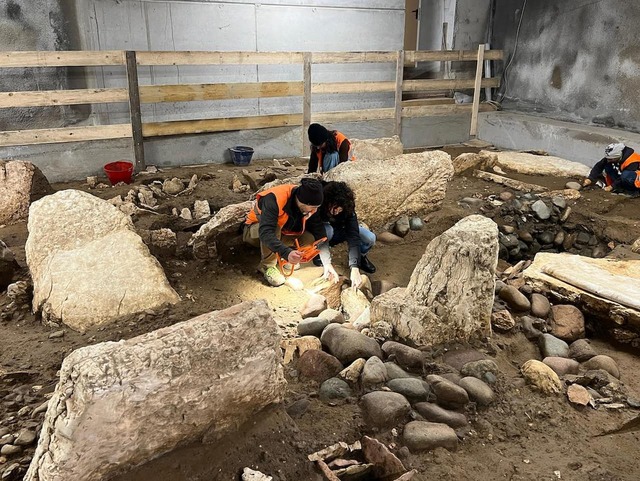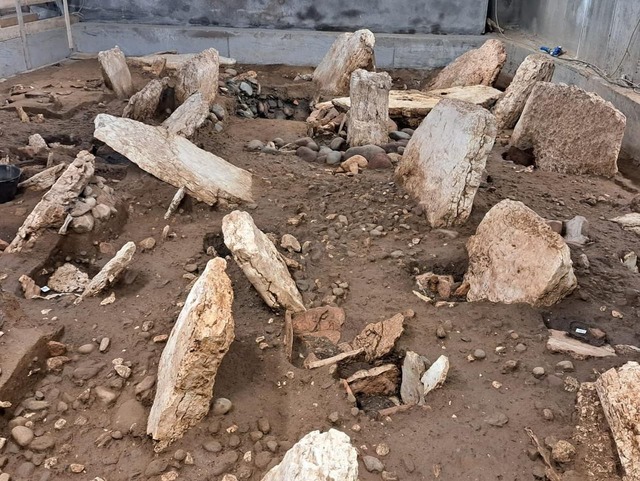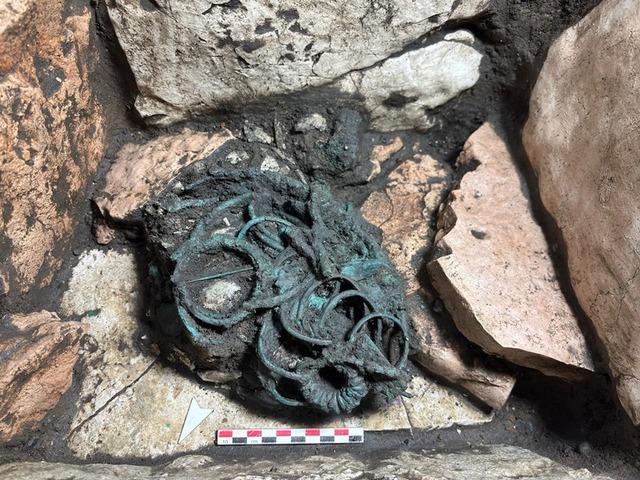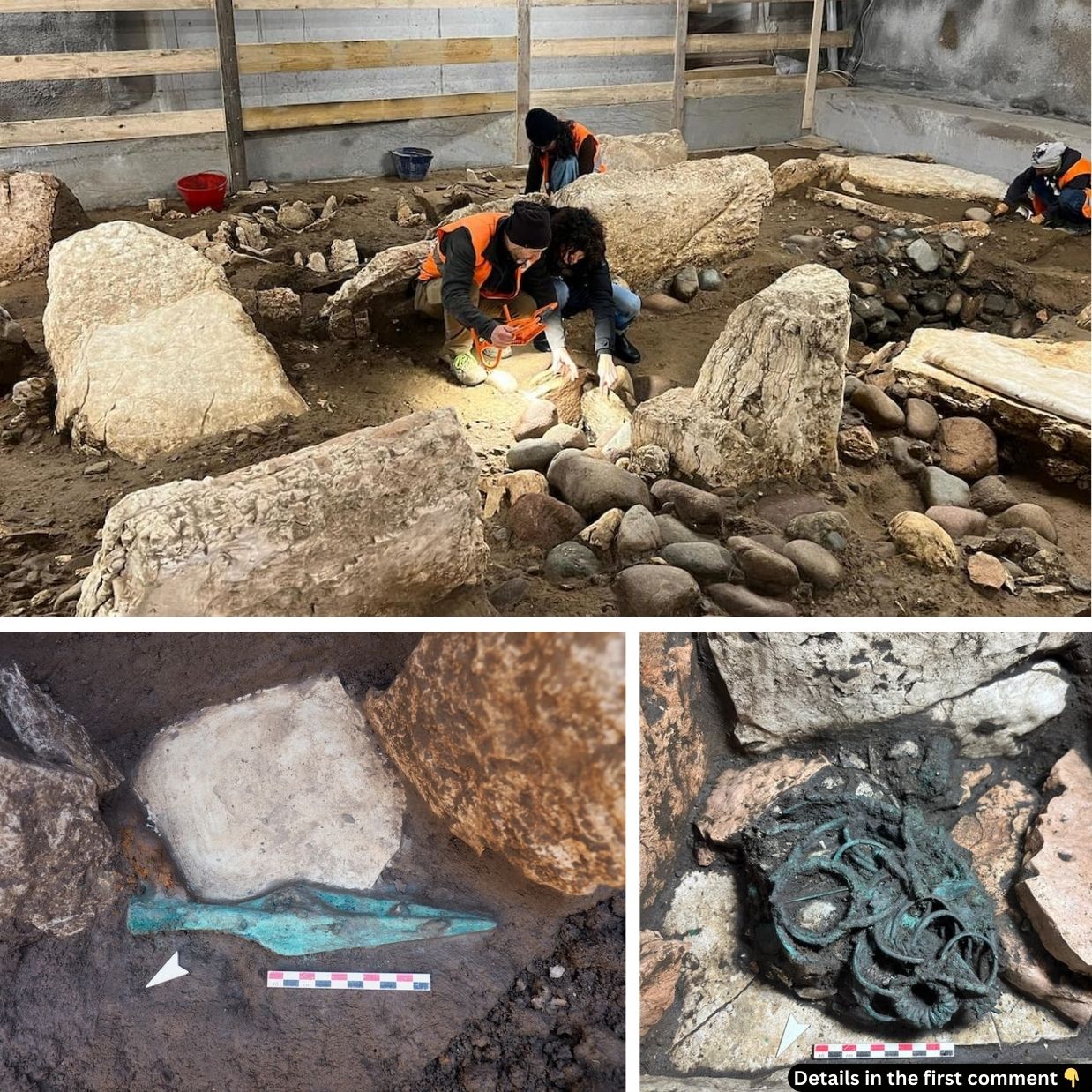In the heart of Trento, Italy, a groundbreaking archaeological discovery has unearthed the secrets of an ancient civilization. A monumental Iron Age necropolis, with towering stelae and exquisite amber-inlaid objects, offers a glimpse into the lives of those who once inhabited this region. As excavation continues, these finds promise to reshape our understanding of funerary practices and cultural exchanges during the Early Iron Age. This site not only sheds light on the past but opens a new chapter in Alpine archaeology.
Archaeological Excavation and Leadership
The excavation of the Trento necropolis is led by Dr. Elisabetta Mottes, a renowned archaeologist from the Ufficio Beni Archeologici of the Autonomous Province of Trento. Alongside her team, which includes Drs. Michele Bassetti and Ester Zanichelli from the Cora Società Archeologica di Trento, Dr. Mottes has been at the forefront of uncovering the layers of history that lie beneath the modern city.

The meticulous restoration of the discovered artifacts has been a vital component of this project. Specialists like Susanna Fruet and Dr. Chiara Maggioni have employed advanced micro-excavation techniques to preserve even the most fragile objects, such as ossuary vessels, which might otherwise have been lost to time. Their dedication ensures that every find is carefully documented, providing a comprehensive understanding of the funerary practices of the period.
Video
Check out this video to explore the discovery of a “monumental necropolis” containing 200 ancient tombs unearthed by archaeologists in Italy, offering a glimpse into the past.
Geographical and Environmental Context

The necropolis is located in a strategic area near the Fersina stream, a key feature in the ancient landscape of Trento. The site is situated between two channels of the stream, areas that were prone to flooding in antiquity. This geographic location has had an unexpected advantage—periodic flooding helped to preserve the archaeological site, providing exceptional conditions for the long-term preservation of the tombs and surrounding artifacts.
The presence of these floods, while disruptive to the lives of the ancient inhabitants, may have ultimately helped protect the site by creating natural barriers that safeguarded it from looting or disturbance. The flooding also allowed for the meticulous preservation of the funerary objects, many of which remain in excellent condition, offering a glimpse into the lives of those who once lived in the region.
Funerary Practices and Cultural Significance
The Trento necropolis is a testament to the rich cultural life of the early Iron Age, and it offers an extraordinary look into the funerary customs of this period. The most striking feature of the necropolis is its alignment of monumental stelae, which stand as tall as 2.40 meters and mark the principal burial sites. These stelae are placed in subparallel lines with a north-south orientation, serving as markers for the burial chambers below.
The burial chambers themselves consist of stone structures covered by tumular mounds, and over time, these structures became surrounded by numerous smaller, satellite burials. The choice of materials used in constructing these structures, including nodular limestones and pink marl limestone, reflects the high status and wealth of the individuals buried here. These architectural features indicate a society that valued monumental markers for its elite, suggesting the importance of social hierarchy and power.
Material Culture and Artifacts
One of the most fascinating aspects of the Trento necropolis is the material culture unearthed during the excavation. Among the many finds are weapons and ornamental items, including jewelry inlaid with amber and glass paste. These objects not only demonstrate the craftsmanship of the period but also highlight the region’s role in long-distance trade and cultural exchange.

Amber, a precious material often linked with the Etruscan world, was commonly used to decorate objects such as fibulae and breastplates. These pieces provide valuable insights into the connections between the Alpine communities and their Italic neighbors, particularly the Etruscans and the Veneti. The use of amber and glass paste suggests that the Trento region was not isolated, but rather part of a broader network of cultural and commercial interactions.
The Complexity of Funerary Rituals
Through detailed microstratigraphic analysis, researchers have begun to unravel the complexity of the funerary rituals practiced by the Trento communities. One particularly intriguing discovery is the presence of “tierra de rogo,” a type of soil accumulation that contains ash and calcined bone remains. This substance was placed in perishable containers, such as fabric-wrapped bundles or ossuary vessels, suggesting that the deceased were treated with great care and ritual.
The presence of fibulae and pins in some graves indicates that the bodies of the deceased were often wrapped in fabric before burial, further signifying the ritualistic nature of these funerary practices. These findings shed light on the symbolic and spiritual beliefs of the community, pointing to a society that deeply revered its dead and honored them through elaborate burial practices.
Trade and Cultural Interactions

The discoveries at the Trento necropolis also underscore the dynamic trade relationships and cultural exchanges that shaped the Iron Age. The objects found at the site, including ornamental items and weapons, suggest that the Alpine communities were well-integrated into broader Mediterranean trade networks. The presence of amber and glass paste, materials linked to the Etruscans and Phoenicians, demonstrates the extensive reach of these interactions.
Moreover, the burial goods found at Trento provide clues about the social status and wealth of the individuals buried there. These items not only speak to the material culture of the community but also offer insights into the mobility and interconnectedness of Iron Age societies across the Mediterranean and Alpine regions.
Scientific Analysis and Future Research
The ongoing excavation and analysis of the Trento necropolis involve a collaborative effort from Italian and international specialists. Archaeobotanical studies, along with an in-depth analysis of human remains, will continue to provide a clearer picture of the community’s social organization, economic structure, and religious practices.
The interdisciplinary team is also studying the funerary goods in greater detail, with the goal of revealing new insights into the beliefs and customs of the Trento community. As more is uncovered from this exceptional site, researchers will be able to refine their understanding of Iron Age societies and the ways in which they navigated the complexities of daily life, trade, and cultural exchange.
Video
Watch this video to uncover the discovery of an “unprecedented” prehistoric monument in France, shedding new light on ancient history and architecture.
Conclusion: Unveiling the Past of an Iron Age Society
The discovery of the Trento necropolis represents a monumental breakthrough in the field of archaeology, offering a rare and invaluable glimpse into the life and death of an Iron Age society. Through the careful study of artifacts, burial practices, and the material culture of the period, researchers are piecing together the story of a people who, despite their geographic isolation, were deeply connected to the broader Mediterranean world.
This remarkable site not only enriches our understanding of ancient burial practices but also opens up new questions about the cultural and social dynamics of the time. As ongoing research continues, the Trento necropolis will undoubtedly remain a key source of knowledge about the Early Iron Age, providing us with an enduring legacy of the past.



